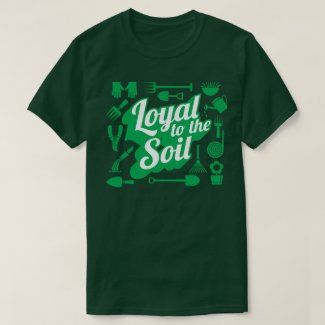Weed Control Methods and Tools
So, it's truly not terribly hard to control weeds using organic gardening methods; here are my favorite tips for organic weed control in the flower garden or veggie patch.
Here are my favorite methods for controlling weeds and improving soil in an organic garden.
Stirrup Hoe
One of the best ways to cultivate a garden planted in rows is to work the soil with a stirrup hoe - a hoe made from a metal strip instead of a solid blade. This handy tool can aerate the soil in your vegetable patch as well as chop up and kill seedling weeds.
Use a stirrup hoe to cultivate the soil in your garden rows about once a week. Take care not to get too close to your plants while working with this tool as it cuts roots and disturbs the soil as you move it back and forth.

4-Tine Cultivator
A small headed cultivator with four prongs or tines, this tool looks like a combination hoe and garden fork.
A 4-tine cultivator has curved pointed blades about the same size as a hoe head on a long handle. It's very sharp and handy for cleaning up the flower bed or vegetable patch.
You can loosen soil and uproot weeds without disturbing your plants. For heavy duty weeding work, you can find these cultivators with thick prongs similar to those of a garden fork.
Garden Fork
A sturdy, thick bladed short handle garden fork is my favorite tool for turning over soil in a new bed or for lifting perennials for transplant.
To use a garden fork for weed control, push it straight down into the soil near a group of weeds and lift the root ball up and out of the dirt. Shake the soil back into the garden bed and throw the weed and its roots away.
You can compost weeds if they have not gone to seed or aren't the kind that propagate easily from cuttings.
Mulch is a Work Saver
I am a firm believer in the power of organic natural mulch. I don't use dyed or treated mulch, and I don't use the mulches made from recycled tires or other rubber products. I like to use mulch from natural products that will break down in a few years and which help build the soil. Mulch applied in at least a 3-inch thick layer will prevent weed seeds from sprouting.
The type of mulch you use depends on what's available in your area or what you can create from your own gardening. You can use grass clippings, shredded bark, chipped branches, straw, hay, shredded leaves or compost. I use cedar chips or pine bark mulch from local sawmills.
Don't use cocoa bean mulch if you have pets or children - it's toxic.
My Secret Mulch Trick
If you place several layers of newspaper or a layer of corrugated cardboard under your mulch you can use less mulch and it will last a long time.
The mulch on top hides the paper and cardboard; if you want to add plants right away you can easily do that after laying down the corrugated pieces by cutting a hole with a utility knife. Some gardeners prefer to wet down the paper or cardboard before applying mulch.
Newspaper and brown cardboard will break down and improve the soil while blocking sunlight from weeds or weed seeds just like natural mulch and they are nontoxic materials that decompose so they improve the soil.
I often use corrugated cardboard covered with mulch to create new garden beds without having to rototill or turn the soil by hand. It kills all the grass or weeds below the cardboard in about 6 months.
Weed Removal Hacks
Even with proper preparation and mulching, you will need to do a bit of weeding now and then. Here are my favorite weeding hacks.
Hand Weeding
Take a walk through the yard equipped with a bucket, hand shovel, and gloves as often as possible and hand pull weeds. Try to pull them before they flower to prevent them from going to seed and spreading themselves all over the yard.
Also, be sure to get all the roots; if you don't, the weed will more than likely be back in a couple of weeks. A hand fork or dandelion weeder works wonders for removing tough, deep weed roots. In a pinch, I use an old screwdriver as a weeding tool.
Boiling Water
To rid yourself of tough weeds growing in your walkways, patio or driveway, try dousing them with hot using a sprinkling can or pitcher. You can also experiment with vinegar-citrus based natural weed killer solutions using a spray applicator. Both these methods work best during hot sunny weather.
Try using a combination of these organic weed control methods in your garden - you'll improve the soil, reduce your work load and your garden will be practically weed-free without use of chemicals or poisons.
Weed Torch Stick
My mother has a portable propane weed-removal torch stick that kills weeds on contact by burning them. She uses it to keep weeds out of her driveway and sidewalk.
This tool would not be suitable for use in mulched beds or near wood fences and other flammable materials, but it works wonders to control weeds on concrete and stone surfaces. It's also a good ice melter if you have snow-covered walks in the winter time.
Lee Hansen is an avid organic gardener who has been planting and harvesting her own produce, flowers, and herbs in self-designed landscapes for more than 50 years.
Grow Your Own with Pastiche
How-to articles, tips for newbie or experienced gardeners, garden crafts and projects for every age and gardening ability.

Related Pages
Home :-: Shop :-: Coloring :-: Clip Art :-: Printables
Search :-: Privacy :-: Site Index





